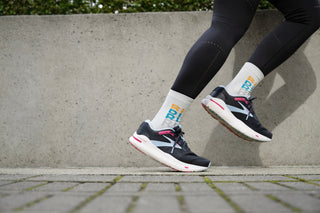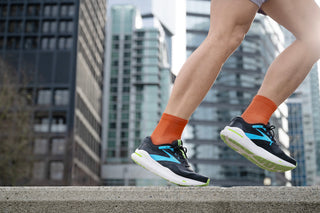While not all diabetics are required to wear diabetic socks, people with diabetes have sensitive feet and suffer from various foot conditions and need to protect their feet more than others. Diabetic socks have unique design features, not found in regular socks, that safeguard the diabetic foot from developing additional problems and help keep it comfortable and healthy. Wearing the appropriate pair of socks is just as important as wearing diabetic shoes!
The majority of people with diabetes suffer from diabetic neuropathy. Neuropathy causes one to lose feeling in the legs and feet by damaging the nerves. Without proper functioning nerves, one cannot sense if something is too hot or too cold or if they have a cut or sore on their feet. Not knowing this can lead to serious infections and complications. Decreased blood flow slows down healing of any cuts or sores which increases the chance of developing ulcers.
What are "Diabetic" Socks?
Diabetic socks are specially designed to decrease the risk of foot injury, to offer maximum blood flow, and keep the feet dry. The best diabetic socks should have most of the following features, but can depend on what the person is looking for.
Seamless: Even the tiniest protrusion can have a severe impact on the diabetic foot. Socks with seams can rub against the skin and can cause blisters or ulcers, which may be harmful for diabetic feet.
Non-constricting: The fit of diabetic socks should be loose, non-constricting and have a super stretch design.They should be loose to the point where you barely feel them! Tight socks can inhibit circulation, which might be challenging for those who suffer from circulatory issues.
Padding: Extra padding and cushioning for sensitive areas help prevent injury and enhances comfort.
Warmth: Diabetes can cause blood vessels to restrict, decreasing circulation to the feet.Diabetic socks should be made from fabrics that keep feet warm and help improve blood circulation.
White Sole: Diabetic socks sometimes have white soles to reveal draining of a wound that may not be felt.
Moisture-wicking: Many socks today are knitted with special yarns that are infused with advanced technology to help maintain a healthy foot. Synthetic yarns such as polyester and nylon are able to move moisture out of the sock and quickly dry up. A dry foot environment helps prevent skin infections and keeps feet comfortable for long periods.
Anti-microbial: Good diabetic socks are treated with anti-microbial technology to prevent the growth of bacteria and fungi in the moisture prone regions of the foot, keeping it healthy. Eliminating bacteria and fungi also eliminates the bad odors in your feet!
BENEFITS OF DIABETIC SOCKS
So generally the benefits of wearing socks with these features help:
- Improve blood flow to your feet
- Keep your feet dry
- Keep fungal infections off your feet
- Provide cushion
- All of these things help keep your feet healthy and injury-free.
Not everyone with diabetes needs diabetic socks. For those who don't have foot problems, regular socks that are comfortable, non-binding, and fit well are sufficient. Although it may be advisable to wear them during lengthy travel, sitting for long periods of time can increase the risk of swelling or blood clots.
At Steve's Shoes we have a wide variety of diabetic socks. We have diabetic socks for wide feet, feet and legs with swelling, dress socks, athletic socks, and more. Click the link below to take a look at some of our different socks or come by to see our selection and ask a sales associate for help with your needs!





